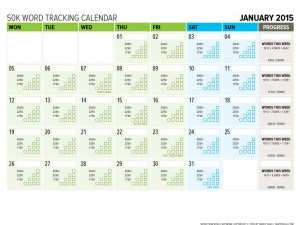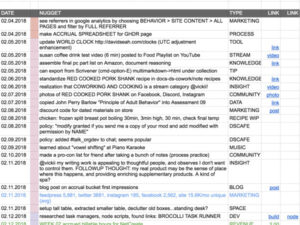(last edited on November 18, 2022 at 12:34 pm)
These past few days have felt rather unproductive, though when I look back on what I got done it would be easy to claim otherwise. What prevents me from feeling good about what I’ve done? The lack of deliberate productive focus, when I called on it. However, I spent some time thinking about what was wrong and decided that I needed to declare a baseline of work/life balance.
What resulted is shown below:
 This diagram arose from my stream-of-consciousness journal (which I don’t recommend to casual readers), in which I reconstructed the events of what I had thought was a poor showing for the day. It turned out that I’d actually done some interesting things.
This diagram arose from my stream-of-consciousness journal (which I don’t recommend to casual readers), in which I reconstructed the events of what I had thought was a poor showing for the day. It turned out that I’d actually done some interesting things.
Mapping My Own Nature
The genesis of the diagram arose Sunday afternoon, after having reconstructed what I thought was a wasted day compounded by a late awakening. Slightly encouraged but still concerned about my lack of focus, I went to Starbucks and had myself a Coconut Mocha Frappuccino to help me think.
The main problem, I thought, was that I felt like I was never doing the right thing when I thought I should be doing it. Those right things are revenue-generating activities (client work, marketing myself), followed by empire-building activities (longer-term projects with non-trivial resource demands). I seemed to spend more time researching things that I didn’t need to, and more time goofing off than I thought I should. I also felt continually behind because I have been waking up later and later. Normally this is not a problem if I am being completely anti-social, but this hasn’t been the case for a while.
While doodling in my notebook over these thoughts, I realized that I actually have a pretty good idea of what my activity requirements are:
- I need 8 hours of sleep.
- For every four hours of intense work, I need about 15 minutes of socialization.
- For every hour of externally-driven work, I need about an hour of self-driven exploration.
- For every hour of dealing with the outside world, I need about four hours of alone time.
- I need to spend at least 15 minutes every day pushing my current projects forward to still feel productive.
- I need to do revenue-generating work every day, before I get distracted by email and other junk.
- I need to get out of the house first thing after I wake up, avoiding email, if I want to have a good production day.
I have collected these rules of thumb over the past year, and I think I’ve written about a few of them in the context of being something of an introvert. Introverts need plenty of alone time to recharge, and embracing this fact of life has allowed me to relax a bit about the absurd number of hours I need to keep to myself. Perhaps this idea could be extended into a breakdown of the day’s hours into meaningful chunks.
 I made several iterations, from left to right, before coming up with a balance of hours that took into account my main activity needs and the time I already tended to spend doing them. At that point, I decided I wanted a little reminder poster to keep by my desk, so I could reassure myself that I was indeed staying within my operational parameters. Perhaps I can maintain peak efficiency by just trying to stay within those boundaries.
I made several iterations, from left to right, before coming up with a balance of hours that took into account my main activity needs and the time I already tended to spend doing them. At that point, I decided I wanted a little reminder poster to keep by my desk, so I could reassure myself that I was indeed staying within my operational parameters. Perhaps I can maintain peak efficiency by just trying to stay within those boundaries.
Design Notes
I ordered the hours on the right first, putting the revenue on the top and sleep on the bottom. I also placed related activities next to each other. Revenue goes on the top, accounting for 25% (6 hours) of a 24-hour day. 67% (16 hours, including 8 hours of sleep) of the rest of the day is devoted to me. Finally, a mere 2 hours is allocated to socializing and/or household chores. I don’t need much socialization to feel OK, and I don’t really have that many chores to do, but if I ignore them for too long I get antsy.
I also find it interesting that the lower levels tend to support the upper levels, but all levels must be activated for me to feel that things are moving along.
After making the 24-hour grid and coloring it, I was trying to think of something cool to do with the blocks. At first, it started out as being a memory map for logging time spent, as I’ve been thinking about how to represent logged time in a database. Since I’ve also been looking at old magazines about 8-bit microcomputers, I started drawing a fancy memory map like they used to have in old computer manuals, but it didn’t quite work. At that point I started thinking about high-end audio components from specialized manufacturers, which remind me a bit of the old 8-bit microcomputer startups from the 1970s and 1980s. I instantly envisioned the retro Seah Microcomputer logo: 4 scantron-style bubbles with a feedback loop, and ran with it:
 I like how it has the slightly-dorky proportions of 1980s microcomputer logos (kind of squat), with elements that reminds me a bit of aerospace and electronic circuit symbols.
I like how it has the slightly-dorky proportions of 1980s microcomputer logos (kind of squat), with elements that reminds me a bit of aerospace and electronic circuit symbols.
The text that accompanies the 24-hour breakdown is inspired by the techy high-end audio marketing you sometimes see, adapted to fit my own design. The Model Four/3 (I’m 43) sounds like a swanky piece of gear, so I just had a good time with it. It promises dire consequences if balance isn’t maintained, which in my personal experience has been completely true:
Congratulations on acquiring your SEAH MODEL FOUR/3 IDEA PROCESSOR. Designed for multi-disciplinary analysis of both logical and emotional inputs, the Model FOUR/3 will with proper maintenance provide years of vigorous creativity every day. The input discrimination algorithms, refined over 40 years of research by SEAH engineers, drive high-sensitivity, high-bandwidth transducers capable of operating in associative visual, auditory, and tactile experience modes simultaneously. Second-stage multi-channel integrated bullshit detectors, operating in sync with dual chain differential INFP-INTJ pattern converters, effortlessly process unordered data points into smooth-reading, domain-adapted infograms suitable for immediate use in the field. The SEAH MODEL FOUR/3 operates on a continuous 24-hour, 50% duty cycle multiplexed between six main life processes. For optimum performance, it is critical to maintain the ratios detailed to the right. While the system can withstand nominal deviations for up to 24 hours, continued operation outside normative parameters can result in complete system failure, requiring initiation of a systems cooldown and restart cycle. This reset sequence may last as long as the period of time that the system was driven out of balance. Be warned that during this time, productivity output will have zero work potential.
OVERBLOWN? Sure! FUN??? Yes!




8 Comments
I know exactly what you mean. I get a lot done but its all ADD…doesnt feel good at all.
I knew there was a reason I liked your blog! I’m an INTJ who organizes my INTP husband. I am borderline INFJ. I couldn’t place how on earth you remind me of my and my husband at the same time like you stuck us in a blender….. INFP… no wonder. The sheer aesthetic value of your graphic designs is why I continue to subscribe to this blog. p.s. I love the ETP but I feel fairly strong on this one (dont INTJs always seem certain?)- it would market better on an search engine if you titled it differently. Daily Productivity Planner. Daily Task Planner. p.s.s. I would love to see a compilation of ETP with the Life Balance (dammit) page. Left column is your day with times, right column has similar to the Dammit page’s left side. middle has empty squares. instead of persnickity tasks at the top you put in the editable point system (name is eluding me) where you give yourself points for completing tasks. This is a completely selfish request from me as I supervise a huge office so I have the flex time in my day but not anything as flexible as you do so I still need the daytimer aspect. The point system boxes will replace my need to add completion stickers to my page or pretend the enjoyment boxes are productivity boxes. I know I’m putting too many topics in but it took me a while to get my favorite parts of all of your downloads in one place with a rationale. If you have a fax number I can cut/paste one for you – I have no graphic design skills to do anything digital.
Though it’s probably not a priority item in your mind right now, I’d like to lobby for some design notes that cover the (graphic) design process. Of course this is a totally selfish request but just think of all the other selfish little bastards who’d be giddy with joy over that stuff… I’m sure there must be one or two more, right?
That being said, my notes on the asset: 1) Neat colours! Love how the high saturation contrasts with the grey area on the left. 2) That line height is pretty sexy… did you go 140%? 3) Oh god, double justified text is going to be awf… oh! Hyphenation! 4) Did you keep the kerning on “Seah Micro” the way it is (just a little ways from aligning with the top circle thingie -insert technical jargon-) because it would break legibility if you went further?
PS: The productivity thing was also entertaining ;)